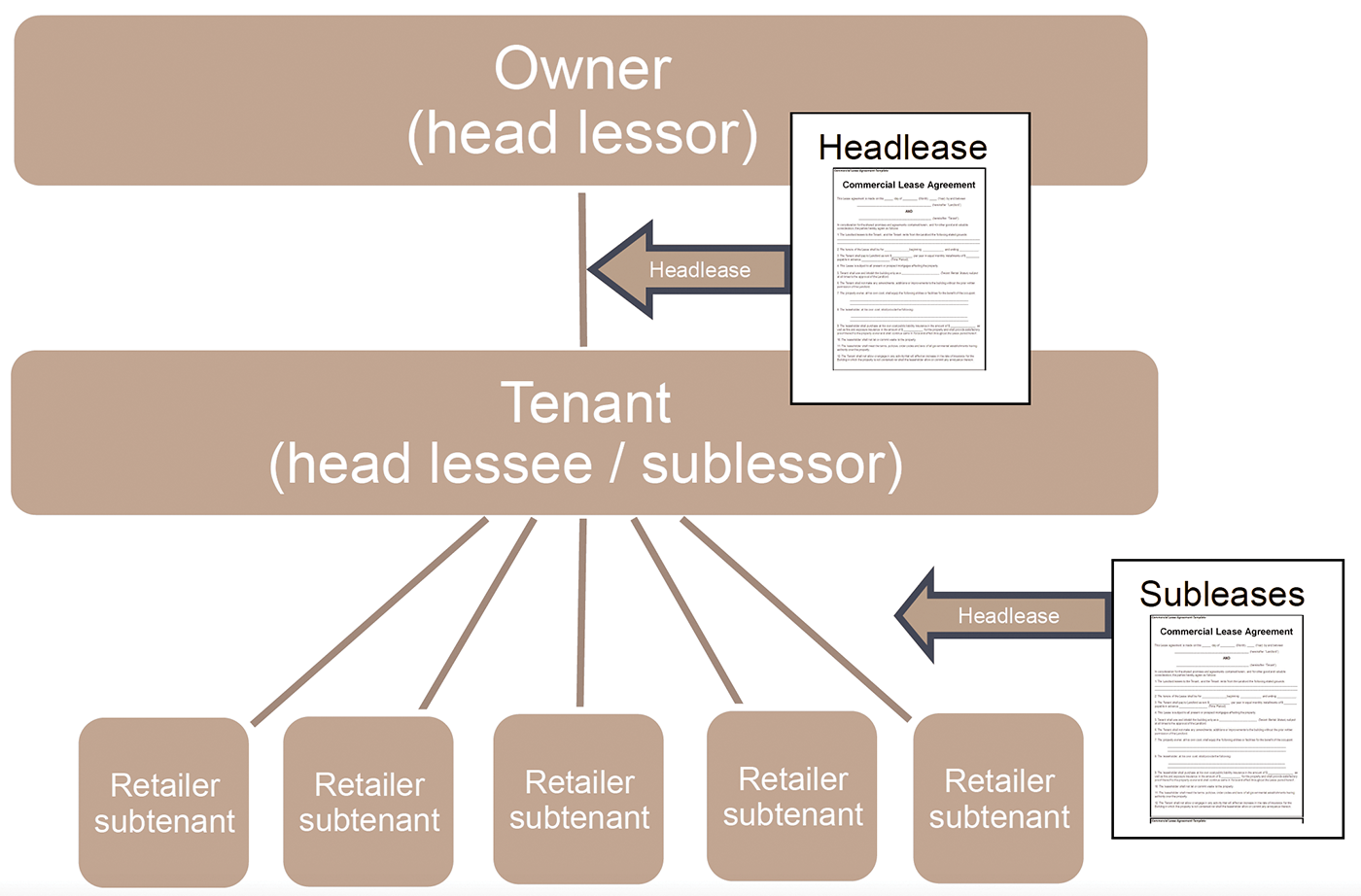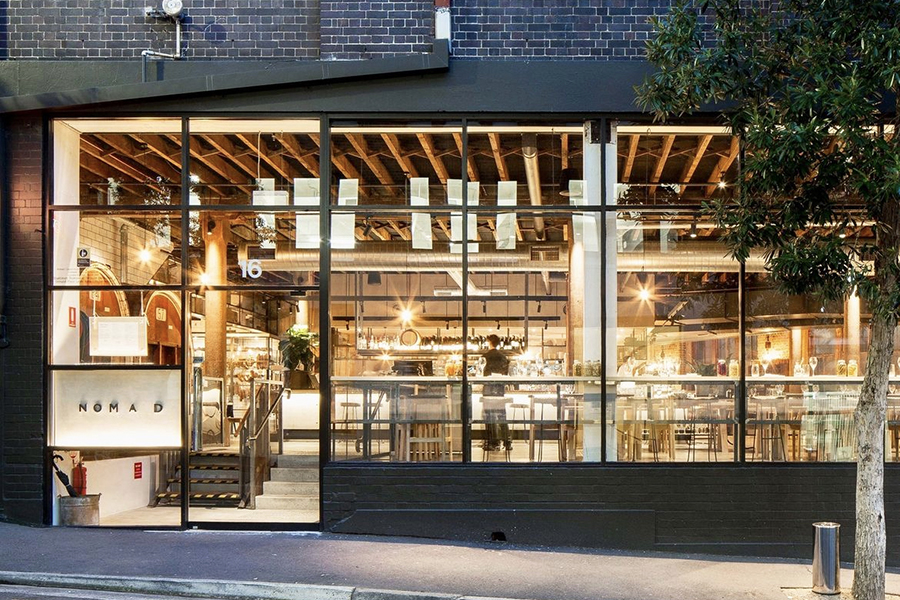Subleases are becoming more and more common. For instance, a food court is leased by one operator who then ‘subleases’ it to the individual operators. It’s a growing trend.
What are the implications of a sublease? For a start it’s a lot more complicated than you might think.
A recent court decision reminds us of the need for both landlords and tenants of retail subleases to be especially careful of the complexities around having a sublease (and not a direct lease).
Whilst the court decision concerned a NSW retail lease, some of the issues highlighted by the case apply nationally.
A typical sublease structure in the retail sector might be as illustrated (right).
But the true complexity of a retail sublease is in the detail. What you might not be aware of is that:
• subleases generally rely on the lease that sits above them (usually called a ‘headlease’) for their survival. A sublessee cannot have any greater entitlement to the land than the head lessee does (for example, if the head lessee has a limited right to use the common areas, then the subtenant’s rights will be equally limited). This is why subleases usually incorporate (but vary) the terms of the headlease document (which makes them very difficult to read and understand).
• If the headlease is terminated, then the sublease will usually ‘die’ (there are some exceptions to this). This presents a problem for retail businesses who can be completely compliant with their lease, but suffer termination because of a default by their landlord under its headlease.
• However, if the headlease is surrendered (i.e. the owner and tenant agree to surrender the lease), at law this usually won’t kill the sublease. Particular legislation in Australia usually has the effect that the sublease will ‘step up’ and become a direct lease between the owner (head lessor) and the subtenant. It’s perhaps an unexpected consequence for owners of retail shopping centres who didn’t think through the consequences of surrendering an internal headlease structure.
• If a sublease is for all of the balance of the term of the headlease, it is a deemed assignment! A sublease should always end at least one day before the headlease does to avoid this unintended legal consequence.
In a retail environment, it becomes even more complicated, as demonstrated by the NSW case of Nelmeer Ashfield Pty Ltd v Farah [2016] NSWSC 279 in the NSW Supreme Court. In that case, the retail subtenant operated a restaurant in the Ashfield Hotel. She occupied the space under a one-year licence granted by the company who operated the pub, who in turn leased the whole of the pub from a related company, which owned the freehold.
The operator of the pub (and the tenant under the headlease) forgot to get a section 16(3) certificate from the retail tenant. The retail tenant therefore argued that the term of her licence was automatically extended to five years. However, the headlease was only a month-to-month lease.
The court held that, because a sublease can’t be any longer than the headlease, section 16(5) of the Retail Leases Act (NSW) 1994 (RLA) meant that the retail tenancy was also on a month-to-month basis and the sublessor’s failure to get a section 16(3) certificate didn’t matter. The retail tenant had argued that the owner and operator of the pub were related companies and that, practically speaking, this meant that the headlease was always going to last as long as the ownership. The court held that this practical reality was not relevant; if the headlease was technically a month-to-month headlease, then the retail sublease could only be a month-to-month sublease.
Subleases between owners and related companies are common tax structures and the facts in this case are therefore not uncommon.
Automatic extensions aren’t the only part of the retail law that becomes complicated in a sublease structure. Consider also section 44 of the RLA, which grants the retail tenant an automatic extension of the term if the landlord doesn’t give an appropriate notice. In the case where you have a non-retail headlease, but a retail sublease, the situation could arise where the subtenant has a right to a six-month extension, but the headlease terminates as the sublessor has no such right! And this leads to possible claims by the retail tenant against either the owner or the sublessor, or possibly both depending on the circumstances.
The moral of the story? Subleases are useful structures, but they are complicated, and you need to make sure that you engage someone to ensure that your position is adequately protected.
*s122 of the Conveyancing Act (NSW) 1919, s115 of the Property Law Act (Qld) 1974, s139 of the Property Law Act (Vic) 1958, s75 of the Property Law Act (WA) 1969, s82 of the Conveyancing and Law of Property Act (Tas) 1884 and s128 of the Law of Property Act (NT) 2000.





















